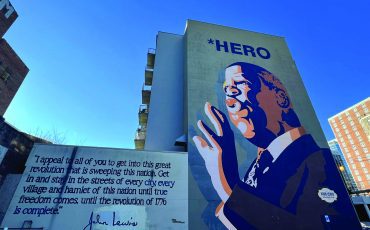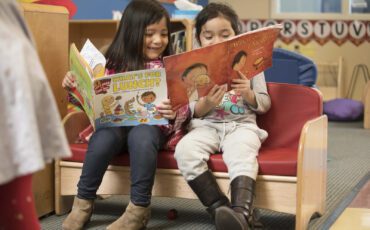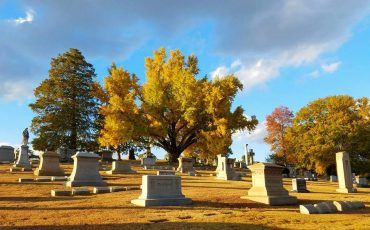The New Brownies’ Book: Bringing Joy and History to the Next Generation
A critical piece of history is a monthly periodical published from January 1920 to December 1921. The work of W. E. B. Du Bois, “The Brownies’ Book,” was the first publication created for African American children. Now, 100 years later, this groundbreaking work has been reimagined in an anthology titled “The New Brownies’ Book: A Love Letter to Black Families.”
The beautiful collection combines art, literature and history for an incredible look at Black life and was compiled by scholar and Emory University professor Karida L. Brown and her husband, artist Charly Palmer. Atlanta Parent spoke to the duo about the importance of this book for Black families and why Black history is relevant to all.
Table of Contents
How did you discover the original “The Brownies’ Book?”
KLB: I was working on an academic book with a co-author and researching the sociology of W. E. B. Du Bois. In his archives, I found a group of letters where he reached out to literati and Harlem Renaissance artists asking them to contribute a piece of their best work for “The Brownies’ Book,” so that Black children could know they were thought about and loved. I wanted to know, what is this book? I fell in love with it. Du Bois was one of the most revered, important, booked and busy intellectuals of his time, but he carved out time in his schedule to create this book because he thought this much of Black children.
What inspired you to bring the project back?
CP: One of the messages Du Bois made called to us: for the Children of the Sun to know that they are loved. There could never be enough of us reminding our children that they are loved and encouraged. We wanted to emphasize and reiterate that message.
Why is this an important resource for Black children and families?
KLB: It’s so beautiful and fun. It is 208 pages of broad representation of the literary and artistic canon from plays to poetry to editorial. There’s abstract art, watercolor, acrylic, collage; the breadth of the artistic value is remarkable. It opens worlds up to children and other family members to start having conversations. We as Black people, as Black creatives, as Black intellectuals, are not bound by anything.
CP: We built it as a family book. You are never too old or too young to go after your dreams. I don’t consider myself a writer, but I had stories to tell. Our youngest artist was 18 at the time of contributing, and the youngest writer was 4.
How does connecting art with history make it more accessible?
CP: Art is a cultural experience. There is something there for everyone. These are representations of us from a visual standpoint. We’re dealing with life and death, dealing with funny stories. There are fantastic stories from the original 1920-21 issues, and 100 years later, we’re still talking about these things and emphasizing these messages.
KLB: There is something that is completely timeless about art. It is telling an immortal story about the Black experience. The art is really the glue, the vessel that allows you to time travel through the Black experience. You can see that in some of the imagery we’ve included from the original book; it still holds that value.
Why is it important to inspire creativity in children?
CP: Sometimes, when we look at our youth, we’re like, “We’re lost; what are we going to do?” There can be an emphasis on the negative, but we do encounter brilliance. There are brilliant young people out there, and they’re saying, “We’re going to be fine.” We have to do everything that we can to encourage and push them forward.
What do you hope readers get from this book?
CP: I hear about Black girl joy, Black boy joy, but I don’t hear enough about Black family joy. I hope it encourages a lot of conversations. There’s a story called “My Mama Sick,” and it brought tears to my eyes the first time I read it. Anyone who’s lost a loved one can relate to that, but often, we can’t talk about those feelings. Reading the book can open up the possibility to have deep and meaningful conversations with family members.
Why have you partnered with Page Turners Make Great Learners?
KLB: Page Turners Make Great Learners is a phenomenal organization. They promote literacy amongst Atlanta youth, and the founder, FeFe Handy, understands all too well the power of reading, and the doors that open for children. Reading takes you anywhere in the world and can take you to other worlds. When we shared the idea of “The New Brownies’ Book” with FeFe, she was so excited, and she extended the opportunity to us. We’ve opened a fund to raise money to purchase “The New Brownies’ Book” to donate to local Atlanta public schools, so children can have access to the book. In the spring, we’ll do assemblies and workshops with the schools, and we’ll be able to gift the books to children who might not be able to get a copy from the bookstore.
Why is Black History Month for all people?
CP: Black History is American history. Black history should always be a part of the educational system. Black culture, Black history affects everything, not just in the U.S., but in the world. People need to understand the contribution that we’ve made to the world and continue working hard to further our contributions.
KLB: It is inaccurate the idea that any of us “did” history alone or in a vacuum. We wouldn’t get the American public school system we know today if we didn’t have the Freedmen’s Bureau pushing education during Reconstruction. When we talk about the contributions of Black Americans, their efforts, their creativity, we remix the whole country in ways that are not in a vacuum but have reverberated throughout the country. Not just Black kids, but all Americans have something to celebrate about Black history.
How does “The New Brownies’ Book” showcase Black history?
KLB: There is a whole chapter called “Young Langston.” His first works were published by Du Bois in the original book. We’ve republished all those works, and beyond reading the material for what it is, it’s highlighting for families that he was submitting work as a teenager, which can serve as inspiration to young people to start their craft early. There are 26 Black women of note in “She’roes.” There’s a quiz at the end of it. With the chapter “School Daze,” we highlight Historically Black Colleges and Universities. There’s a chance to engage within these pages, and then, go do something with that knowledge.
CP: I would like to tell parents to please pick up the book in order to experience it. It truly is an experience. You never know what’s going to be on the pages until you turn to the next one. It ends with a piece I did on a musician that I honestly didn’t know anything about. There was an attempt to wipe away his history by the government in France. It was intentional to end with this piece — if you’re not careful, if you’re not researching, you’re going to forget or not even know the amazing things around the world that Black people have done.
To learn more and purchase the book, visit chroniclebooks.com. Learn more about the nonprofit partnership at pageturnersgreatlearners.org.










